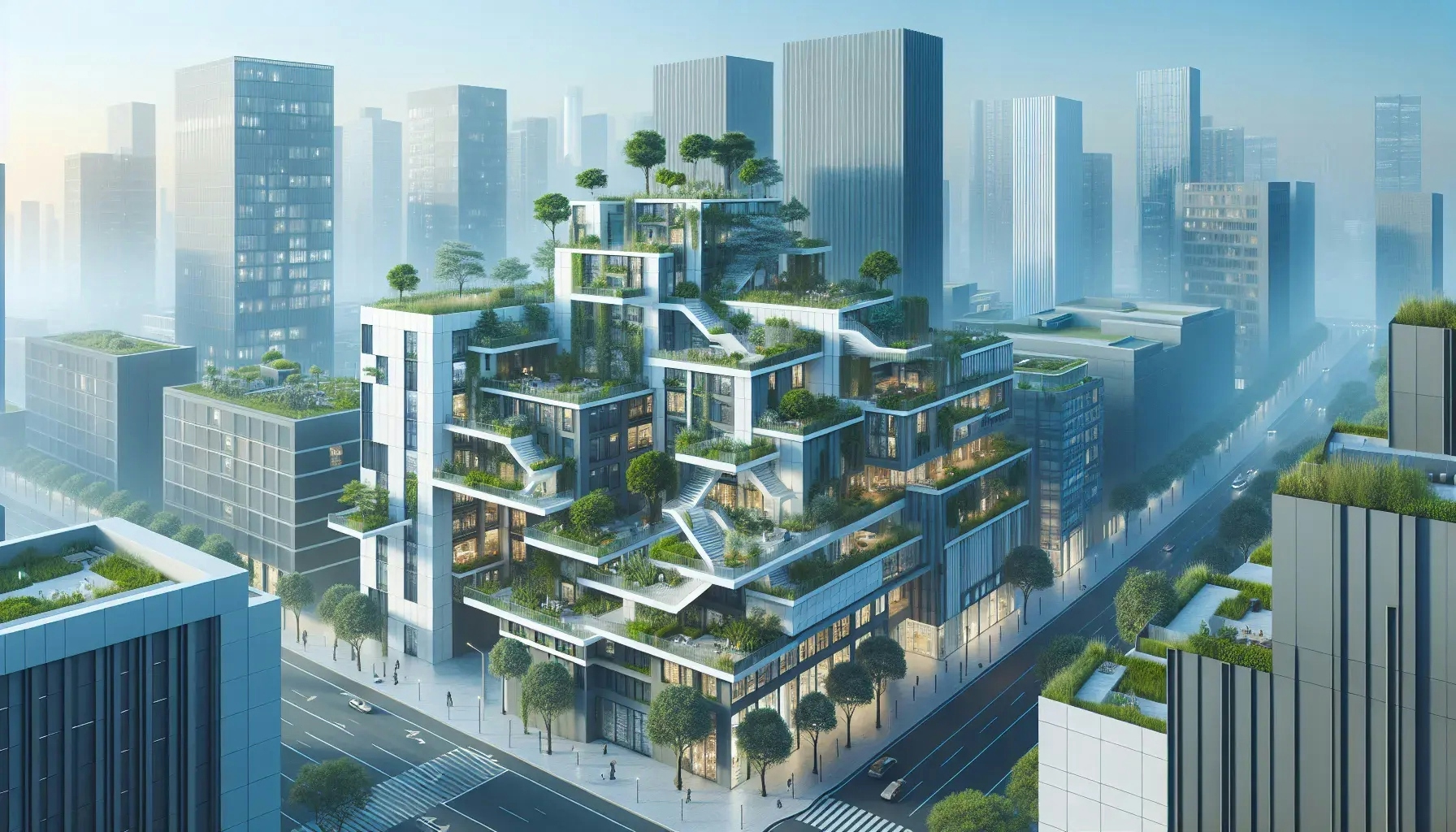Integrating Green Spaces in Urban Architecture
Architect Today

The integration of green spaces into urban architecture is not just a trend; it's a necessity. As urban areas continue to expand, the need for green spaces becomes increasingly apparent. These spaces provide a breath of fresh air, quite literally, amidst the concrete jungle. They offer a place for relaxation, recreation, and a connection to nature that is often lacking in urban environments. This blog post will explore the importance of green spaces, the benefits they bring, and how architects are innovatively integrating them into urban designs.
The Importance of Green Spaces in Urban Areas
Green spaces play a crucial role in urban environments. They serve as the lungs of the city, improving air quality by absorbing pollutants and producing oxygen. Green spaces also help to reduce urban heat, a phenomenon where city areas are significantly warmer than surrounding rural areas due to human activities and the prevalence of concrete and asphalt.
Furthermore, green spaces contribute to the mental and physical well-being of city dwellers. They provide a place for people to exercise, socialize, and relax. Studies have shown that exposure to green spaces can reduce stress, improve mood, and enhance cognitive function.
In addition, green spaces can also contribute to biodiversity in urban areas. They provide habitats for various species of plants and animals, helping to maintain a balanced ecosystem. This is particularly important in cities, where development often leads to habitat loss and reduced biodiversity.
The Benefits of Integrating Green Spaces into Urban Architecture
Integrating green spaces into urban architecture can bring numerous benefits. For one, it can improve the aesthetic appeal of buildings and cityscapes. Green spaces can break up the monotony of concrete and steel, adding color and life to urban areas.
Moreover, green spaces can also contribute to energy efficiency. Vegetation can provide natural insulation, reducing the need for heating and cooling in buildings. This can result in significant energy savings and a reduction in carbon emissions.
Furthermore, green spaces can also enhance the livability of cities. They can provide residents with access to nature, even in densely populated areas. This can improve quality of life and contribute to the overall attractiveness of a city.
Innovative Approaches to Integrating Green Spaces into Urban Architecture
Architects are coming up with innovative ways to integrate green spaces into urban architecture. One such approach is the use of green roofs. These are roofs that are partially or completely covered with vegetation. Green roofs can reduce heat absorption, improve air quality, and provide habitats for wildlife. They can also provide recreational spaces for residents.
Another approach is the use of vertical gardens or living walls. These are walls that are covered with plants, either directly or by using containers. Vertical gardens can improve air quality, reduce noise pollution, and enhance the aesthetic appeal of buildings.
In addition, architects are also designing buildings with integrated parks and gardens. These can provide residents with direct access to green spaces, without the need to travel. This can be particularly beneficial in densely populated areas, where space is often at a premium.
Challenges in Integrating Green Spaces into Urban Architecture
While there are many benefits to integrating green spaces into urban architecture, there are also challenges. One of the main challenges is space. In densely populated areas, there may not be enough space to incorporate green spaces.
Another challenge is maintenance. Green spaces require regular care and upkeep, which can be costly and time-consuming. This can be a significant barrier, particularly for larger projects.
Furthermore, there can also be regulatory challenges. There may be building codes and regulations that limit the extent to which green spaces can be incorporated into urban architecture.
Case Studies of Successful Green Space Integration
Despite these challenges, there are many examples of successful green space integration in urban architecture. One such example is the Bosco Verticale in Milan, Italy. This residential complex features two towers that are covered in over 900 trees and 20,000 plants. The vegetation helps to absorb CO2, produce oxygen, and reduce urban heat.
Another example is the High Line in New York City. This elevated park was built on a former railway line and features a variety of plants and trees. The High Line has become a popular attraction, drawing millions of visitors each year.
The Future of Green Spaces in Urban Architecture
The future of green spaces in urban architecture looks promising. As the benefits of green spaces become increasingly recognized, more and more architects are incorporating them into their designs.
In the future, we can expect to see more innovative approaches to green space integration. This could include the use of advanced technologies, such as hydroponics and aeroponics, to grow plants in urban environments.
Furthermore, there is also a growing trend towards biophilic design, which seeks to connect people with nature in the built environment. This could lead to more buildings and cityscapes that are not just green, but truly alive.
Embracing Green Spaces in Urban Architectural Design
Incorporating green spaces into urban architectural design is not just about aesthetics or trends. It's about creating healthier, more livable cities. It's about improving air quality, reducing heat, and enhancing biodiversity. It's about connecting people with nature, even in the heart of the city. As we look to the future, the integration of green spaces into urban architecture will undoubtedly play a crucial role in shaping our urban landscapes.